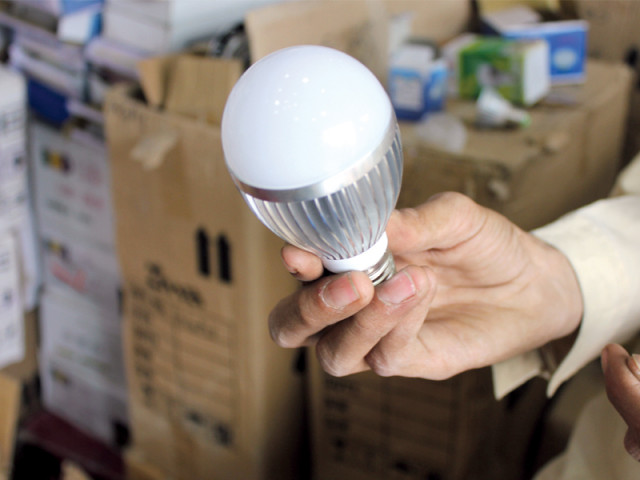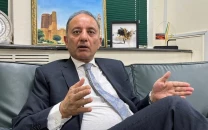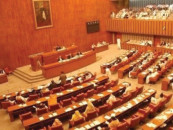The bright lights: Sluggish demand for LED lights due to high cost
LED bulbs do not fall under renewable energy domain, cannot be exempted from import tax: AEDB chairman.

LED bulbs do not fall under renewable energy domain, cannot be exempted from import tax: AEDB chairman.
At Rawalpindi’s College Road market, Malik Zafar sells LED bulbs and lights, but he does not have a favourable view of these items.
“[Due to the high price] People are just not buying these lights,” Zafar said.
LEDs are semiconductor light sources and they are energy efficient. They only consume around 20 per cent of the energy burnt by old-fashioned incandescent light bulbs. LEDs also use just around 3 to 4 Watts (W) to produce the same level of light as a 35W incandescent bulb or a 10W compact fluorescent “energy saver” lamp.
“ LED bulbs are energy efficient, give constant light and have a working life of up to 22 years,” said Naveed Hassan Bokhari, Director (solar) at the Alternative Energy Development Board (AEDB).
“Unlike energy saver bulbs, which carry the risk of mercury poisoning if they break, LEDs do not pose a health hazard either.”
However, at the wholesale markets on College Road and City Saddar Road, the cheapest variant of a 7-Watt LED bulb costs Rs750. That is around six times as expensive as an energy saver of similar quality.
It is also three times the cost of a best quality 7Watts direct current (DC) LED bulb, the reason being that DC LEDs are tax-exempt, but the alternating current (AC) variety, that Malik sells, is not. The DC lights only work with a battery-based system or a solar power solution.
So if someone without a solar panel installed wants to buy energy-efficient LEDs, they would have to buy the AC kind, which are taxed at 35 per cent tax.
Chinese companies are the major suppliers of these products in the Pakistani market. Because DC LEDs work with solar panels, the AEDB had sales excise and customs taxes and duties waived off. But as the AC LED bulbs do not fall under the renewable energy domain, Bokhari said the AEDB could not get them exempted.
Instead, the AEDB urged the National Energy Conservation Centre (ENERCON) to push the agenda for consideration. At a December 27 meeting, which was attended by Member Customs and Chairman Federal Board of Revenue (FBR), representatives of ENERCON took up the issue of tax exemption for the LED bulbs.
The FBR and customs officials were of the opinion that ENERCON should reroute the request through its parent ministry --- Water and Power. ENERCON wrote a letter to get approval from the ministry, but months on, the request has not been entertained. The recent change of the ministry’s secretary has become the latest hurdle in the way of LED duty exemption.
On February 23, Sikandar Ahmed Rai replaced Nargis Sethi as secretary water and power and ENERCON had to send a new, updated letter.
ENERCON has recommended tax exempt status for LEDs, irrespective of fittings or fixtures, so that the duty exemption promotes local assembly of LED bulbs and indigenous production of other parts. While the cheapest variety cost well-under Rs1,000, the more sophisticated LEDs can cost as much as Rs2000. The cheapest LEDs do not come with any guarantee for circuitry.
Importers, in turn, would contact ENERCON to get the exemption and the centre could impose energy certifications and quality restrictions.
Ministry officials did not respond to repeated requests by The Express Tribune for their version on LED tax exemption. Most of the LED bulbs are imported from China, but some are also being assembled in Pakistan using imported parts.
Published in The Express Tribune, March 18th, 2013.



















COMMENTS
Comments are moderated and generally will be posted if they are on-topic and not abusive.
For more information, please see our Comments FAQ